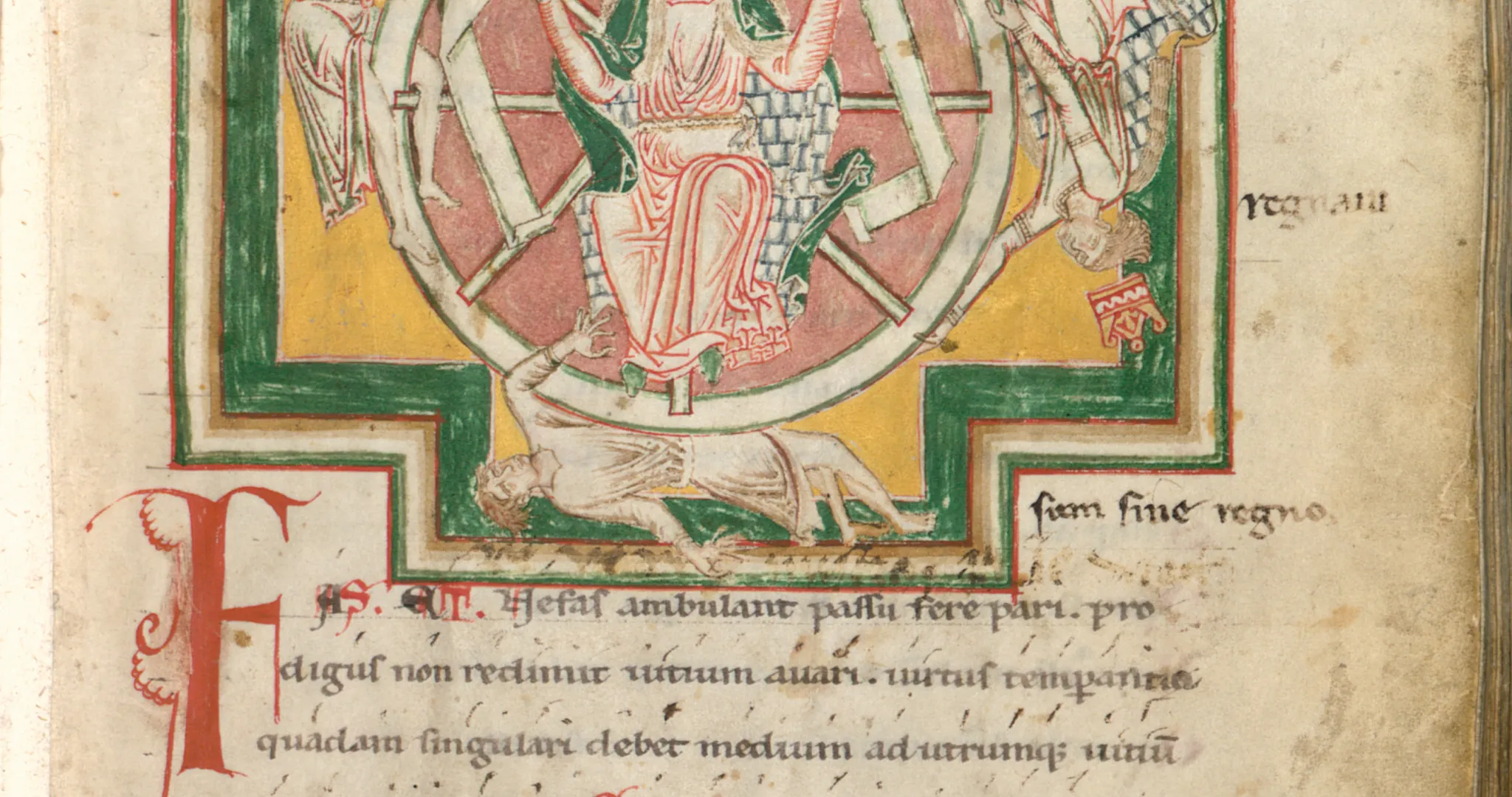Please update your browser
Your current browser version is outdated. We recommend updating to the latest version for an improved and secure browsing experience.

Carmina Burana
Excalibur and the Carmina Burana
John Boorman's Excalibur (1981) was the first film to make use of Carl Orff’s Carmina Burana (1935), which has subsequently become one of the more familiar pieces of 20th century classical music. Like many of his contemporaries, composer Carl Orff had long had an interest in folk music and folk dances, and he incorporated this into a work intended as a response to Igor Stravinsky’s modernist masterpieces of the 1910s.
The Latin libretto for Orff’s three-act Cantata is derived primarily from the Codex Buranus, a collection of writings from the 11th to the 13th century by young clerics called Goliards. As was typical of the Goliards, there are strong parodic elements throughout, but these are counterbalanced by the implacable, repetitive return of Fortuna Imperatrix Mundi, the Wheel of Fortune that shapes human life. The universal nature of these forces is reinforced by the repeated appearance of a children’s choir.
Although there were no obvious Nazi elements to the Carmina Burana, Orff was favored by the reimge and he accepted commissions from the Cultural Ministry. Despite possibly self-serving claims to have been involved in the White Rose resistance movement along with his friend Kurt Huber, Orff’s postwar reputation was tarnished by his prominence as a composer during the Nazi period. This is undoubtedly one reason for the comparative obscurity of the Carmina Burana before Boorman boldly chose to employ the choral section about the Wheel of Fortune (“O Fortuna”) in Excalibur. Characteristically, Boorman sidesteps the many historical and contextual associations clouding access to the work and penetrates to its mythic core, connecting it dramatically first to the pulling of Excalibur from the stone and then to the discovery of the Grail, the restoration of the ailing Arthur, and the regeneration of the land. This is a true Rite of Spring.








